Life in Orchha, India

On safari with the Olympus mirrorless camera and 75-300mm lens
In 2013, I kept hearing the term mirrorless and micro 4/3 but wasn’t sure exactly what it was. After some research and a visit to a camera store, I was sold on the Olympus mirrorless camera system and specifically the OM-D em5. I wanted a travel-friendly camera that uses interchangeable lenses that could eventually replace my heavy and cumbersome DSLR as well as compliment my iPhone photography.
My initial impressions were based on the way it felt in my hands, the solid build and how lightweight and compact it was in comparison to my Nikon camera body and lenses. One of the things I liked about the Olympus camera system was that they had a greater selection of lenses than any other mirrorless system as Panasonic lenses work on the Olympus camera bodies.
As you know, I advocate for the iPhone as a capable and fantastic camera and even made a case for photographing your safari with a smartphone. While I recommend taking photos with your iPhone, the camera in your pocket, sometimes you need more of a reach while on safari or photographing wildlife in the distance.
Hello Olympus.
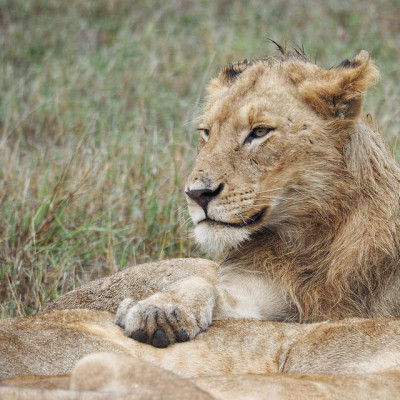
SWITCHING TO OLYMPUS
In the Autumn of 2013 was the OM-D e-m5 camera body, the 12-42mm 3.5-5.6, 45mm 1.8 and the 40-150mm f4.0-5.6 lenses. Then came the OM-D em-1, a contender for making a switch from DSLR to a mirrorless system for my photography business.
I purchased it and some prime lenses, a 17mm 1.8, 45mm 1.8 and 75mm 1.8 lenses. The em-5 became my backup camera and the 75mm 1.8 quickly became my favourite portrait lens out of the studio and the 45mm 1.8 lens became my favourite portrait lens in the studio.
I was impressed with what I was achieving with the Olympus system, even with ‘straight out of the camera’ images. It had been some time since I touched my Nikon camera, so I made the switch from DSLR to a mirrorless micro 4/3 system and haven’t looked back since. I travel everywhere with my Olympus camera and use it in the studio with my studio flash units and pocket wizard flash triggers; it works perfectly.
In 2014, the M. Zuiko 40-150 mm 2.8 pro lens made its debut and I could hardly wait. I received it just in time for a November 2014 trip to South Africa for a project I was working on there and also planning some time for a safari. One of my favourite captures with the lens is of a leopard in the Sabi Sands private game reserve.
THE OLYMPUS MIRRORLESS CAMERA SYSTEM ON SAFARI
The photo below is of a much-loved leopard known as Karula, and she was on the move. She was also travelling with a companion, a male leopard known as Tingana. They were mating so any chance of a shot, you had to be quick. Here’s the shot I captured of her as she looked my way for a second, literally.
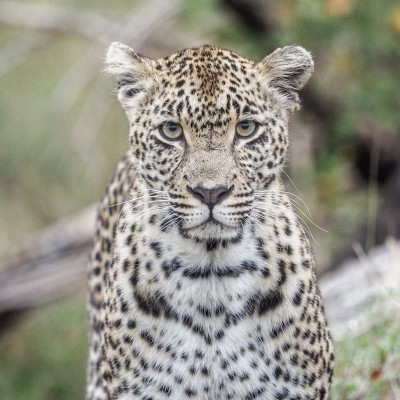
When on safari in a private game reserve, you get fairly close to the animals. The M. Zuiko 40-150mm 2.8 pro lens is a fantastic lens for the situation. It is fast, incredibly sharp and gives you an equivalent focal length of 80-300mm on a full-frame camera. Add the mc-14 teleconverter and it’s a fantastic combination. Keep in mind you lose 1 full stop with the teleconverter.
When on a self-drive or guided game drive in the Kruger National Park, the animals may not be as close and you must stay on the paved or dirt roads. In a private game reserve such as Sabi Sand, your guide can drive off-road if you’re tracking an animal. I’ve often needed a further reach in Kruger.
I read about the Olympus M.Zuiko Digital 75-300 mm f/4.8-6.7 ED II, a super-telephoto lens that is equivalent to a focal length of a 150-600mm lens on a full-frame camera. It is much smaller and lighter than the comparable focal length reach with a Nikon or Canon. Fortunately, I was able to get the lens on loan from Olympus, and I took it with me to South Africa for some wildlife photography testing.
ON SAFARI WITH THE OLYMPUS M. ZUIKO 75-300MM LENS
Here are some images using the lens while on safari in South Africa.
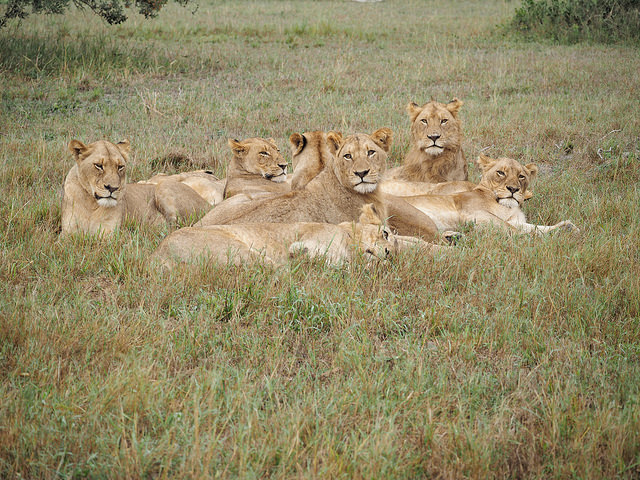
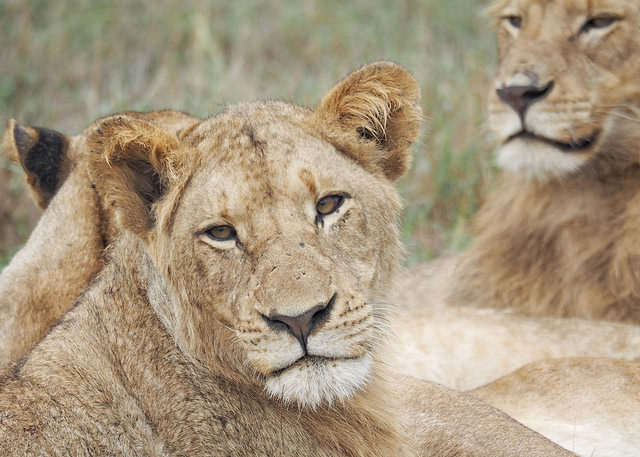
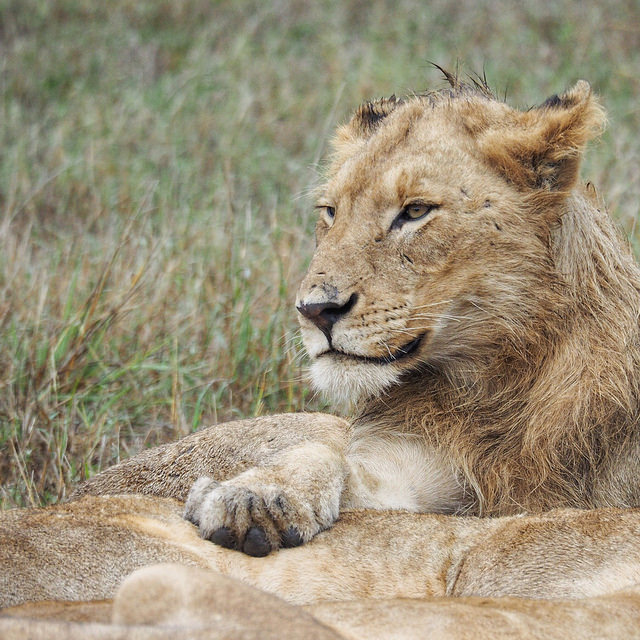
I was impressed especially considering these were handheld shots and I was in a safari game viewer with seven other passengers, not the stillest of conditions.
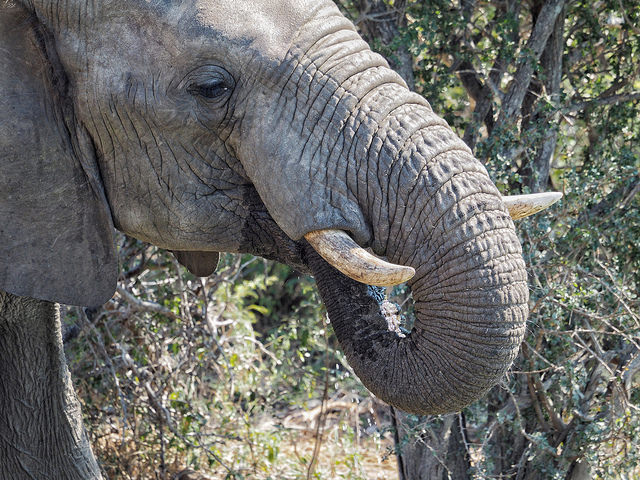
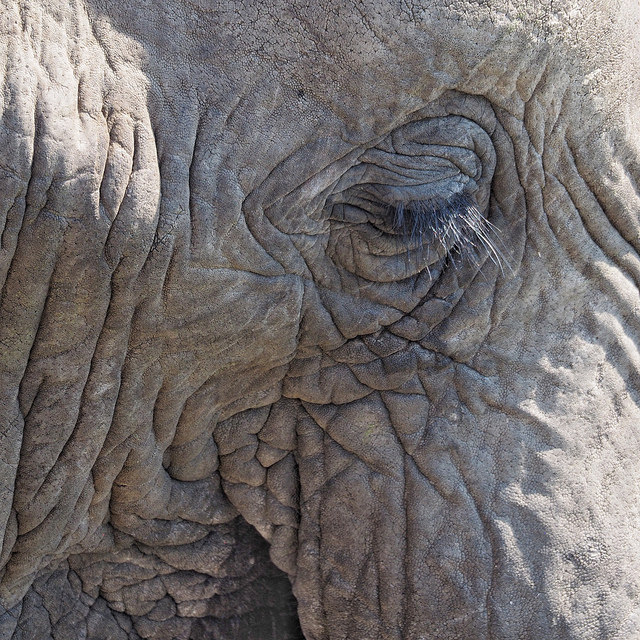
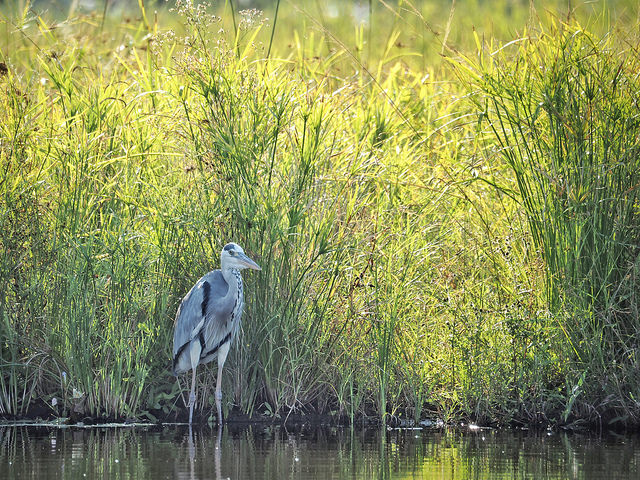
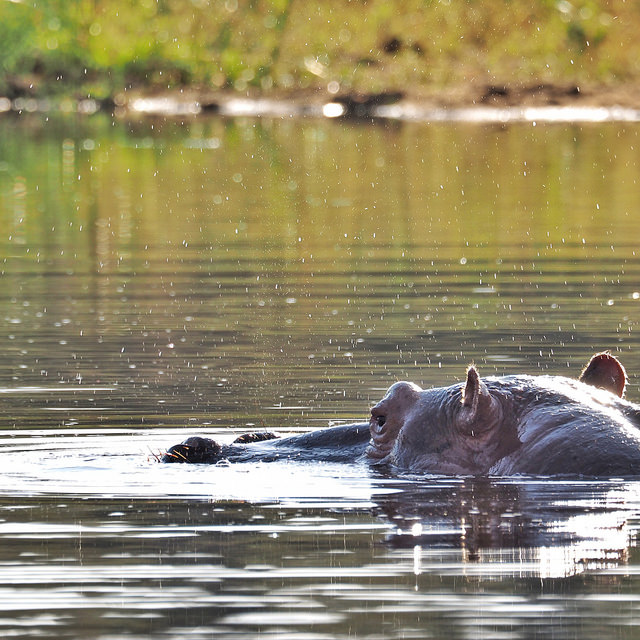
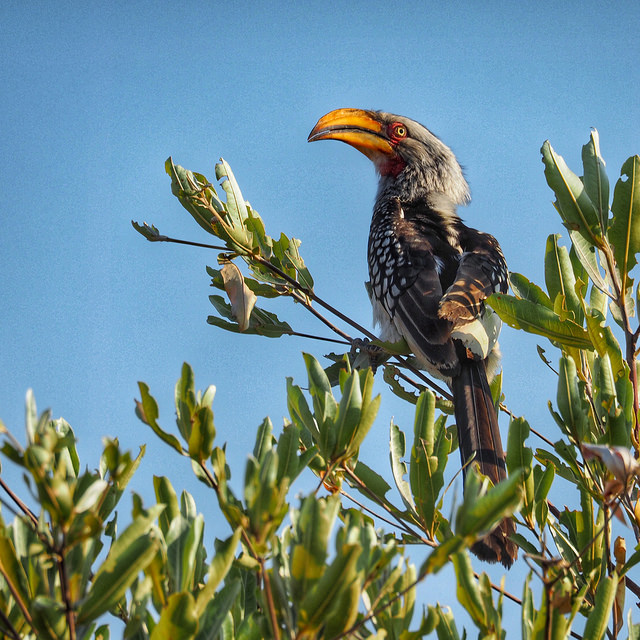
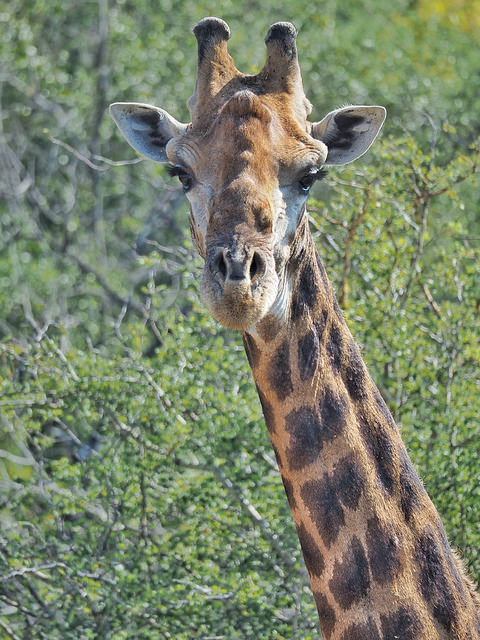
The quality you get for the price, the reach, the size, and weight make this lens one to add to the camera bag for anyone that is looking for a super-telephoto glass that travels well and doesn’t break the bank. It’s a great option for safari.
UPDATE AUGUST 2019
Olympus has since released an M. Zuiko 300mm F/4 IS pro lens and a 2x teleconverter that works with the M. Zuiko 40-150mm 2.8 pro lens and 300mm pro lens. I haven’t invested in the 300mm pro lens because I need the flexibility of a zoom lens as I do not want to travel with 2 camera bodies. I do however get to borrow the 300 mm F/4 pro lens from time to time for my Spring and Fall bird-watching activities.
In case you haven’t heard, Olympus announced a 150-400mm f/4.5 lens. I’m waiting to hear more about it, but I suspect it will be out of my budget. I’d like to test the Olympus M.Zuiko 12-200mm F3.5-6.3 lens. This could be in consideration for the one perfect travel lens, although I do love my 40-150mm f/2.8 lens.
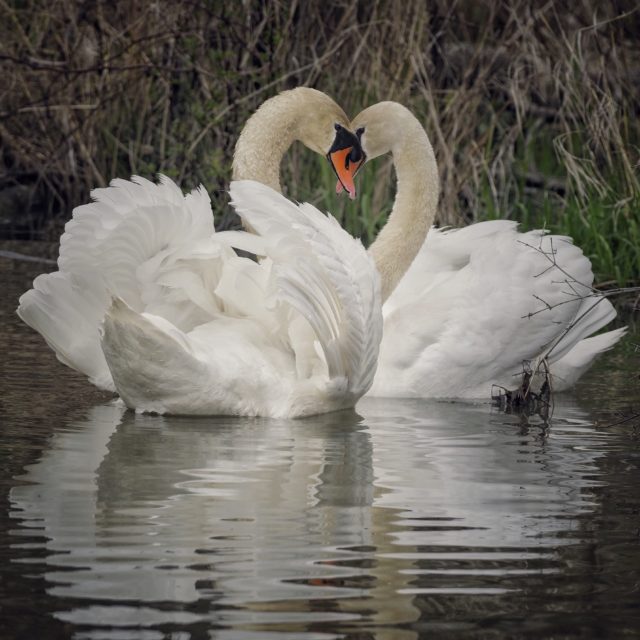
In October I’ll be leading a 7-day Cape Town photo tour. While in South Africa, I’ll once again be visiting Kruger National Park and the Greater Kruger area for safari. Stay tuned for a report on the new 2x teleconverter that I recently purchased.
Note: All Olympus camera bodies and lenses I own have been purchased by myself and have not been sponsored by Olympus. The Olympus M.Zuiko Digital 75-300 mm f/4.8-6.7 ED II was temporarily on loan to me from Olympus. All opinions, as always, are my own. I will only ever share reviews of products I find worthy of telling my readers.
Best camera and lenses for safari:
- Olympus OM-D em1 mark II
- M. Zuiko 40-150mm 2.8 pro lens fantastic zoom lens, so sharp
- M. Zuiko 12-40mm 2.8 pro lens a good everyday lens
- Olympus Digital 2x teleconverter
- Olympus 300mm F/4 IS pro
Other lenses I use and love and are great for travel:
- M. Zuiko 75-300mm 4.8-6.7 lens super-telephoto lens
- Olympus 12mm 2.0 lens for astrophotography and a solid wide-angle for landscape)
- Olympus 60mm 2.8 lens a fantastic macro lens & fixed shorter telephoto lens of 120mm
- Olympus 75mm 1.8 lens for portrait photography
- Olympus 17mm 1.8 lens for street photography
- Olympus 45mm 1.8 lens my in-studio portrait photography lens
Note: Some posts on this site may contain affiliate links to products and sites I recommend. Should you click through and purchase or book something through the link, I may earn a small commission. It is of no extra cost to you. As always, if you have any questions, please do not hesitate to connect with me. For the full disclosure policy, visit here.
Cows in the Eastern Cape, South Africa

6 Things to Know about Traveling in Myanmar and a Myanmar Itinerary
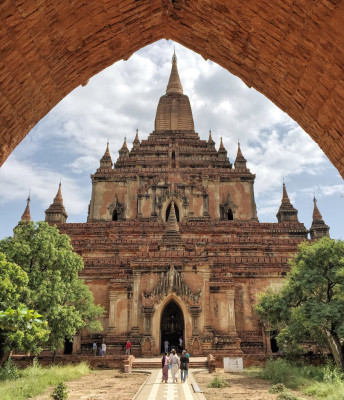
Planning a trip to Myanmar? Myanmar is relatively new to tourism and is rapidly changing. As such I wanted to give you a list of 6 essential things you should know about travelling in Myanmar and share my Myanmar itinerary.
This article will share how to get a SIM card in Myanmar, the best Myanmar destinations to visit like Inle Lake and the Mergui Archipelago, and the critical nuances of how to exchange USD to kyat. I will also share how to say thank you in Burmese, how to pronounce ‘Myanmar’ and the best time to visit Myanmar. Spoiler alert, my answer is now.
We travelled from Mandalay to the most southern city in Myanmar, Kawthaung. We cruised the Irrawaddy River for 9 hours to Bagan, drove 12 hours through the Shan hills and past small villages to Inle Lake, visited a cave with hundreds of Buddha along the way, saw paper parasols being made, attended a Pagoda Festival on Inle Lake, lit candles to honour my ancestors in Nyaung Shwe and went liveaboard boating around the Mergui archipelago in southern Myanmar. It was one of the most incredible trips of my life. It was wonderful to see where my father and grandparents grew up and finally meet over half of the 100+ relatives I have in Myanmar.
1. Exchanging Money and US Dollars in Myanmar
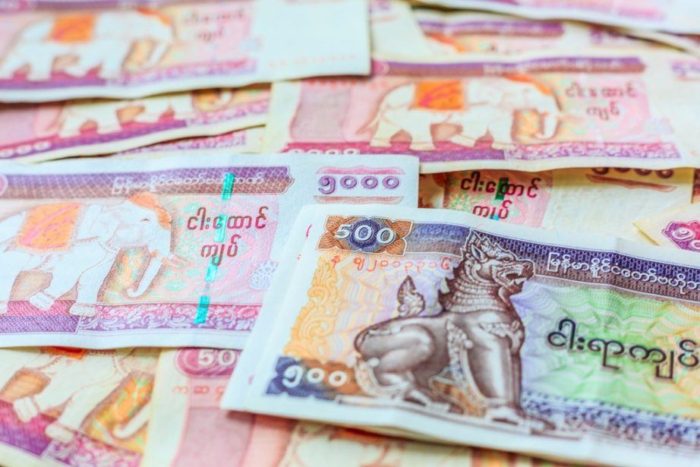
There were ATMs everywhere in Mandalay and Yangon but the country is still very much a cash society. Bring crisp, unmarked United States dollars (USD) for exchanging. There are a few exchange kiosks at the Mandalay and Yangon airports; you will also find some in the major cities. You may have read about having crisp notes; I can confirm that they were still strict about this. Family members had some notes rejected because there was writing on them, or the bill was slightly bent. Sometimes the ATM machines had run out of cash or we were not able to withdraw from some of them for unknown reasons. So make sure to plan for that.
- Tip: Bring one hundred dollar bills instead of fifty or twenty dollar bills if you can because one hundred dollar bills get a better rate than fifty dollar bills. I recommend exchanging USD rather than relying on ATMs especially in smaller towns. Bring some envelopes to carry your money because you will receive a lot of kyats. At the time of my visit, $500 USD was over 650, 000 kyats. That is a lot of bills, but I managed it by carrying it in separate holders/wallets. You will be using cash a lot. At the time of writing it is 1 USD to 1525.20 kyat.
2. SIM cards and Internet access in Myanmar
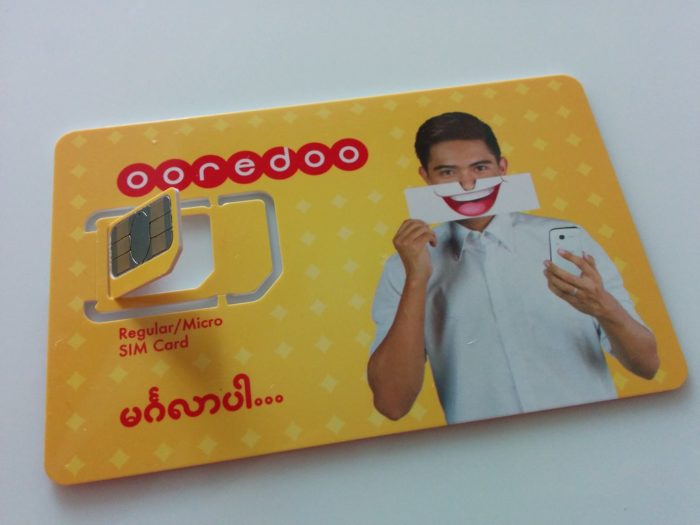
Your phone must be unlocked to be able to use a sim card from one of the 3 wireless companies in Myanmar – Ooredoo, Telenor and MPT. All 3 companies are vying for your business at the Mandalay and Yangon airports. In October 2015, it was 1500 kyats ($1-1.50 USD) for a SIM card and 11,500 kyats for 2.5 GB of data (about $8-9 USD) with Ooredoo. The coverage was good in Mandalay, Pyin Oo Lwin, Bagan, Inle Lake, Kalaw and Yangon.
Data coverage was sporadic when we travelled through the mountains from Bagan to Inle Lake in Myanmar. That’s to be expected when travelling through the mountains anywhere in the world. When we travelled from Mandalay to Bagan on the Irrawaddy River, data signals were non-existent. Overall I was impressed at the coverage and the speed and was able to Instagram, Facebook, tweet and do video calling by Facetime with my family at home in Canada. For a 2.5 week trip, I had more than enough data. Most hotels in Myanmar have wi-fi but I found the wi-fi to be slow except for the Bagan King hotel we stayed at in Mandalay.
- Tip: If you post a lot of photos or like to use Facebook or Instagram, get the 2.5 GB amount. Though there are many shops where you can reload your prepaid data, language barriers could and probably will be an issue at the small stores (see the ‘English language’ tip below).
- For further information, visit this link for prepaid data costs in countries around the world.
3. Temple and Pagoda Manners
If you are visiting a temple or pagoda, cover your legs to at least past your knees. That goes for women and men. Also, cover your shoulders and expect to go barefoot once there.
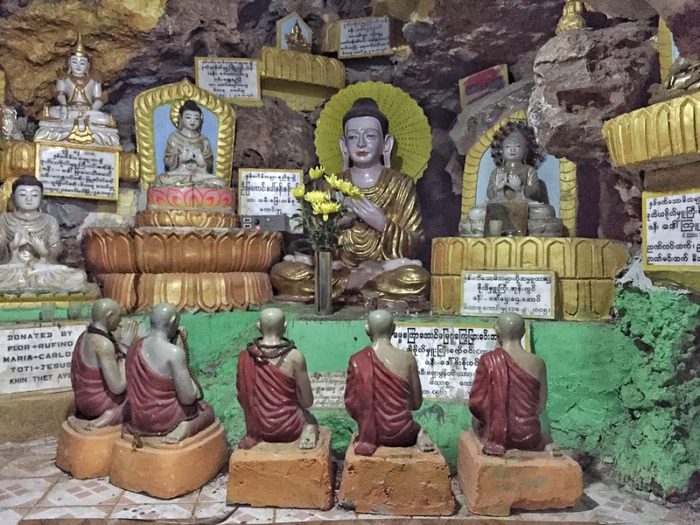
- Tip: Pick up a longyi (a Burmese sarong) at a market. It’s lightweight, travels well, is inexpensive and you will have a useful and beautiful souvenir of your visit.
4. The English language in Myanmar
Myanmar is open to tourism but is still very new to it. It is a very welcoming and friendly country, and they do want tourism to grow, but finding people with a good command and understanding of the English language can be difficult in most places. I have travelled in many non-English speaking countries and have found that the staff at the front desk of a hotel or people in the tourist areas are able to speak and understand English the best. This was not the case in Myanmar when I visited, especially at smaller locally-owned hotels and restaurants and in smaller towns. Please don’t expect that your servers in the restaurants will understand your questions about the menu or understand your food preferences. Keep your English simple, use gestures and have patience.
Update 2020: I’m hearing that it is a little easier to find people that speak some English. Still, be prepared for a significant language barrier.
The proper way to pronounce ‘Myanmar’ is not my-an-mar or me-an-mar. Listen to this pronunciation.
- Tip: If you have allergies or can’t handle spicy food get that written for you in Burmese. Here’s a translation for “I’m allergic to seafood” and “I’m allergic to nuts”.
- Use these 2 words whenever you can — Min-ga-la-ba (a way to say hello, similar meaning to namaste) and Cè-zù tin-ba-deh (thank you in Burmese).
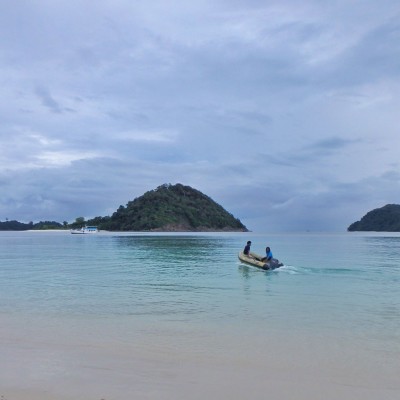
5. The Best Time to Visit Myanmar
Now, seriously. Myanmar is continually changing and at a rapid pace. Go while you can still see Myanmar before all the shiny new hotels, buildings and Mergui Archipelago resorts takeover. It is a beautiful country, and though much has changed in the last few years, you’ll still get a real sense of the place.
If you prefer to visit when it’s not as hot, then I recommend a visit between mid-October to mid January. If you’d like to have moderate temperatures and good weather in the Mergui Archipelago then mid-November to February is ideal.
Myanmar Festivals
If you want to attend some lesser-known but cultural festivals, go to Myanmar in October. The weather is excellent, it’s the end of the monsoon season, and before the busy tourist season. The Festival of Lights known as Thadingyut is celebrated all over Myanmar on the full moon in October. I enjoyed celebrating Thadingyut in Nyaung Shwe (Inle Lake). As a descendant of the lands, it was a beautiful and meaningful experience for me. Pagodas and temples are full of candles, and every home has a candle in their window. My father recalled celebrating the festival the years he grew up in Yangon.
The unique Phaung Daw Oo Pagoda festival occurs in the days leading up to Thadingyut in Inle Lake. During the Phaung Daw Oo Pagoda Festival, the Karaweik barge travels for 18 days from village to village spending a night or two at their temple. The barge carries four images of Buddha, and a procession of boats that are powered by 100 leg rowers (the Intha men) per boat pulls the barge. We met up with the parade in a village on Inle Lake on the last day of the festival and then celebrated Thadingyut that same evening in Nyaung Shwe.
Read: Two Festivals Worth Travelling to Myanmar for
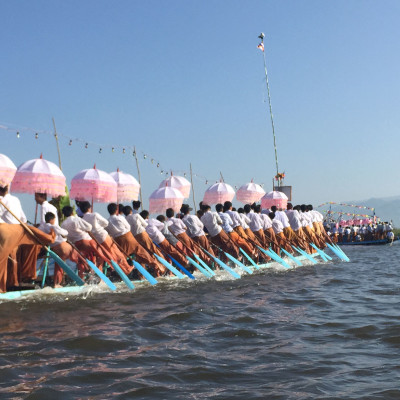
6. The Best Places to Visit in Myanmar
There is a reason tourists are visiting the places on the tourist trail, they’re worth seeing, but it can get crowded during the high season. Check out my 17-day Myanmar itinerary for ideas for your trip to Myanmar. See my ‘best time to visit Myanmar’ tip below.
Our 17-night Myanmar Itinerary:
Mandalay – 3 nights – Bagan King, Mandalay
I feel that 3 nights is the perfect amount of time in Mandalay to see the small city and visit nearby U Bein Bridge and Pyin Oo Lwin.
- Mandalay Hill & Sutaungpyei Pagoda
- Mandalay Palace
- Amarapura & U Bein Bridge and a boat ride on Taungthaman Lake
- Pyin Oo Lwin, Kandawgyi Botanical Gardens, Pwe Kauk Falls, and Maharant Htoo Kan Thar Pagoda
- Visited family
- Travelled by boat to Bagan, 9 hours
Bagan – 2 nights – The Hotel Umbra, Bagan
I would have liked one more night in Bagan, see the explanation below.
Bagan – Inle Lake by Private Van
We travelled by private car through the rolling hills of the Shan State to Nyaung Shwe. It was a 12-hour journey but we made many stops along the way.
- Kalaw
- Pindaya parasol workshop
- Pindaya Caves
Nyaung Shwe, Inle Lake – 3 nights – Hupin Hotel, Nyaung Shwe (Inle Lake)
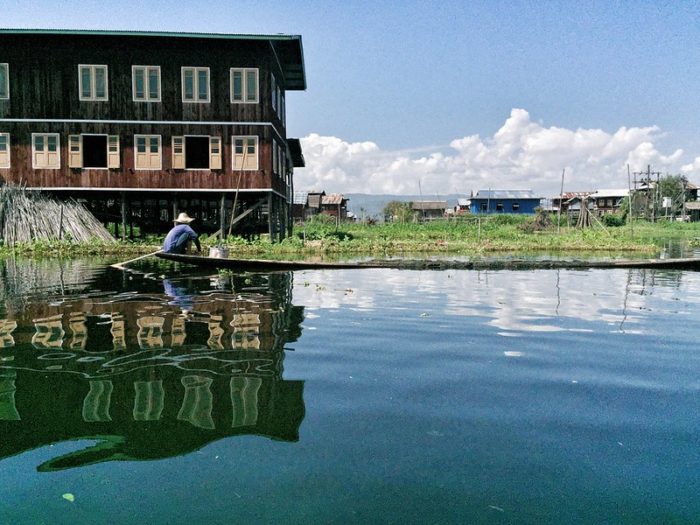
I worked our Myanmar itinerary around the timing of the Phaung Daw Oo Pagoda Festival, because of that I had one less night in Bagan than I wanted and 1 more night in Nyaung Shwe than I needed. I feel I could have seen what I wanted to see in Inle Lake in 2 nights.
- Phaung Daw Oo Pagoda Festival
- Thadingyut Festival
- Inle Lake Boat Tour
- Visited various markets and craftspeople
- Travelled by plane to Yangon
Yangon – 5 nights – Winner Inn, Yangon
Most of our time here was spent with family. I feel that 3 nights is sufficient to get a good feel of Yangon and even include a visit to the Golden Rock.
- Shwedagon Pagoda
- Strand Hotel
- Htwe Oo Myanmar puppet show
- Heritage Yangon & colonial buildings
- Yangon’s Musmeah Yashua Synagogue
- Bogyoke Aung San Market
- Visited family
- Travelled by plane to Kawthaung
Kawthaung – 1 night
Mergui Archipelago – 3 nights liveaboard boat
We spent 3 nights travelling by boat with a 4 person crew, plus the captain and a Myanmar tourism official. Read below for more details.
- visited the remote Andaman islands
- 115 Island, Nga Man Island, Kyun Phila, Myauk Ni, Thay Yae Island
Obviously, if you don’t have the time, there are ways to reduce the number of days for your Myanmar itinerary. You could visit for 7 days or 7 months and still not have enough time.
If your time is limited, I would say that you should not definitely put Inle Lake and Bagan on your Myanmar itinerary. They are two very different places that are not to be missed. I highly recommend finding a way to make it work and dare I say, skip Yangon or limit it to just 1-2 nights on your itinerary.
The Most Beautiful Places in Myanmar
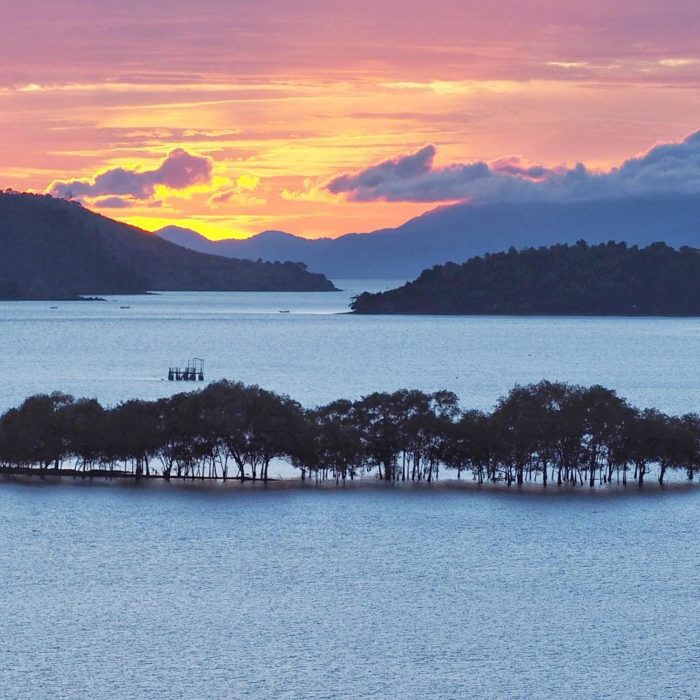
For me, there were two that stood out on my Myanmar itinerary above the rest – Bagan and the Mergui Archipelago. Sadly, I only had 1 night in Bagan but could have spent at least another 2 nights there. There’s just something about being surrounded by all the ancient temples and pagodas and knowing they have survived a few significant earthquakes. The history, the beauty, and the peace of the place drew me in.
For something off the tourist trail, plan a visit to the Mergui Archipelago, also known as the Myeik Archipelago in southern Myanmar. The Mergui Archipelago is still very much untouched with only 2200 tourists a year (2015 stats) and is home to the best beaches in Myanmar.
The Mergui Archipelago was hands-down the most remote place I’ve ever visited. We travelled by private liveaboard boat as we cruised from beach to beach for 3-nights/4-days. It was surreal. The only other people we saw were fishermen and the Indigenous Moken people.
Snorkelling the Mergui Archipelago in Myanmar
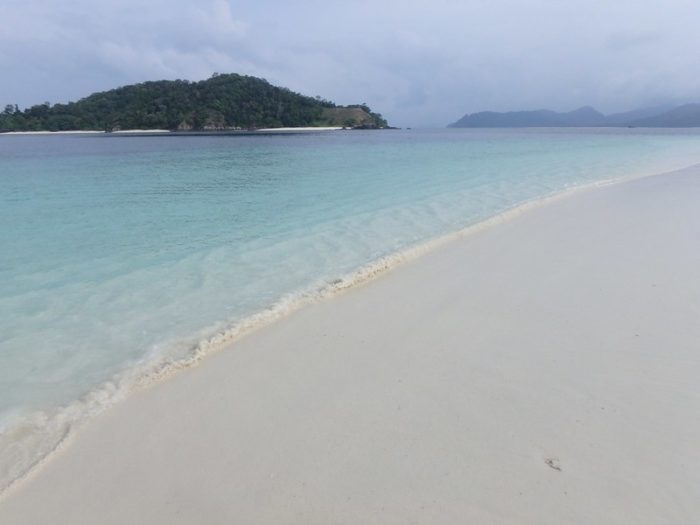
The Mergui Archipelago is home to over 800 mostly uninhabited islands in the Andaman Sea, the indigenous Moken people and the best beaches in Myanmar. The Moken are traditionally a nomadic people that live by and off the sea, but have been forced to live in island villages and have been losing their traditional ways.
The beaches in this region of Myanmar were something out of glossy magazine. They only sign of life and those beaches not inhabited by Moken people were monkey tracks.
Snorkelling in Myanmar was incredible. It was the first time I saw such a variety of marine life and the first time (and only time so far) I’ve seen cuttlefish and squid. I snorkelled with a wide variety of tropical fish including ‘Nemo’ and ‘Dory’, moray eel, cuttlefish, urchin, squid, banded sea krait (sea snake), sea cucumber and several different coloured hard corals. I imagine that scuba diving in Myanmar is even more incredible, but I, unfortunately, don’t have personal experience to share. As we made our way back to the jetty in Kawthaung at the end of our liveaboard experience in Myanmar, we saw the fins of a shark in the distance.
- This region in Myanmar is only accessible by liveaboard boating. We started and ended in Kawthaung after a short plane ride from Yangon. After our three incredible nights on a liveaboard in Southern Myanmar, we took a long tail boat from Kawthaung to Ranong, Thailand. We spent a night in Ranong and flew Nok Air to Bangkok, Thailand the next day for our onward journey, we spent a final night in Bangkok before making our way home to Toronto, Canada.
- Our boat stopped at one of the Moken communities, but I did not go ashore. Five chapans (Moken traditional dugout boat) filled with children rowed out to our boat. The captain gave the children food and drinks and off they went with a smile, “Mingalabar” and a wave. To learn more about the Moken and their plight, visit Project Moken.
- View some photos of my time in this beautiful region: Moken chapan boat | Kawthaung Sunset | Kawthaung Jetty
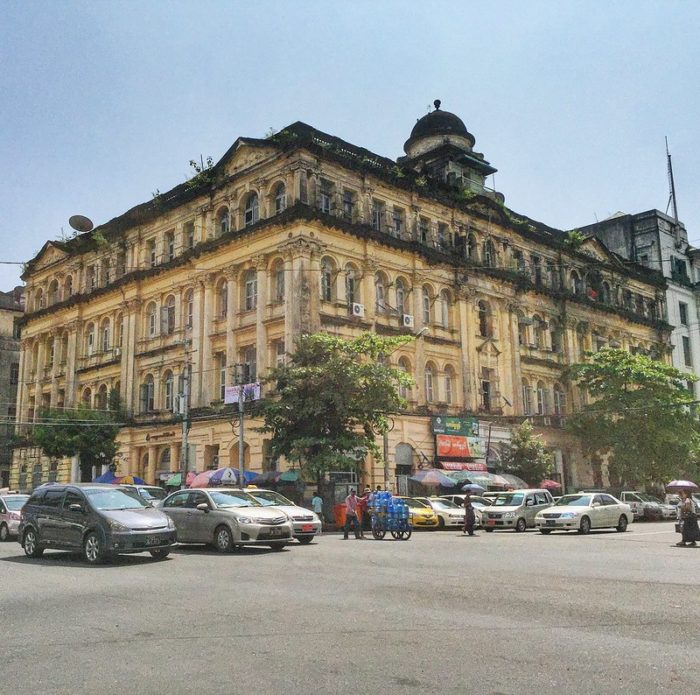
Where to Stay in Myanmar
- Winner Inn, Yangon
- Bagan King, Mandalay
- The Hotel Umbra, Bagan
- Hupin Hotel, Nyaung Shwe (Inle Lake)
- Victoria Cliff Hotel & Resort, Kawthaung (before/after Myeik/Mergui Archipelago
Yangon Tours
- Yangon Full Day Tour with a Guide
- Yangon 4-Hour Food Tour
- Yangon Tradition & Culture Tour
- Yangon Private Tour
- Kyaiktiyo Pagoda Golden Rock Trip from Yangon
Mandalay Tours
- Mandalay to Amarapura Tour (U Bein Bridge, Sagaing)
- Mandalay to Pyin Oo Lwin Tour
More Things to Know about Traveling in Myanmar:
- Support local arts and see a traditional puppet show in Yangon, read about my experience – The Last 30 Puppeteers of Yangon, Myanmar
- In Yangon, Thadingyut is best celebrated at the night market at Yay Kyaw Street or the Shwedagon Pagoda. I arrived in Yangon late on the last evening of Thadingyut and unfortunately, missed the celebration at Yay Kyaw Street and the infamous human-powered Ferris wheel.
- If you’re planning to visit during the Phaung Daw Oo Pagoda Festival in Inle Lake, you can find a schedule online for when the leg-rowing races occur (twice). I missed the last race by a few days; it would have been wonderful to see.
- Read my personal story of my ‘return’ to Myanmar – The Long Road to Mandalay
Note: Some posts on this site may contain affiliate links to products and sites I recommend. Should you click through and purchase or book something through the link, I may earn a small commission. It is of no extra cost to you.
As always, if you have any questions, please do not hesitate to connect with me. For the full disclosure policy, visit here.
Mom and baby baboon in Kruger National Park, South Africa

Early morning boat ride on the Ganges in Varanasi, India

